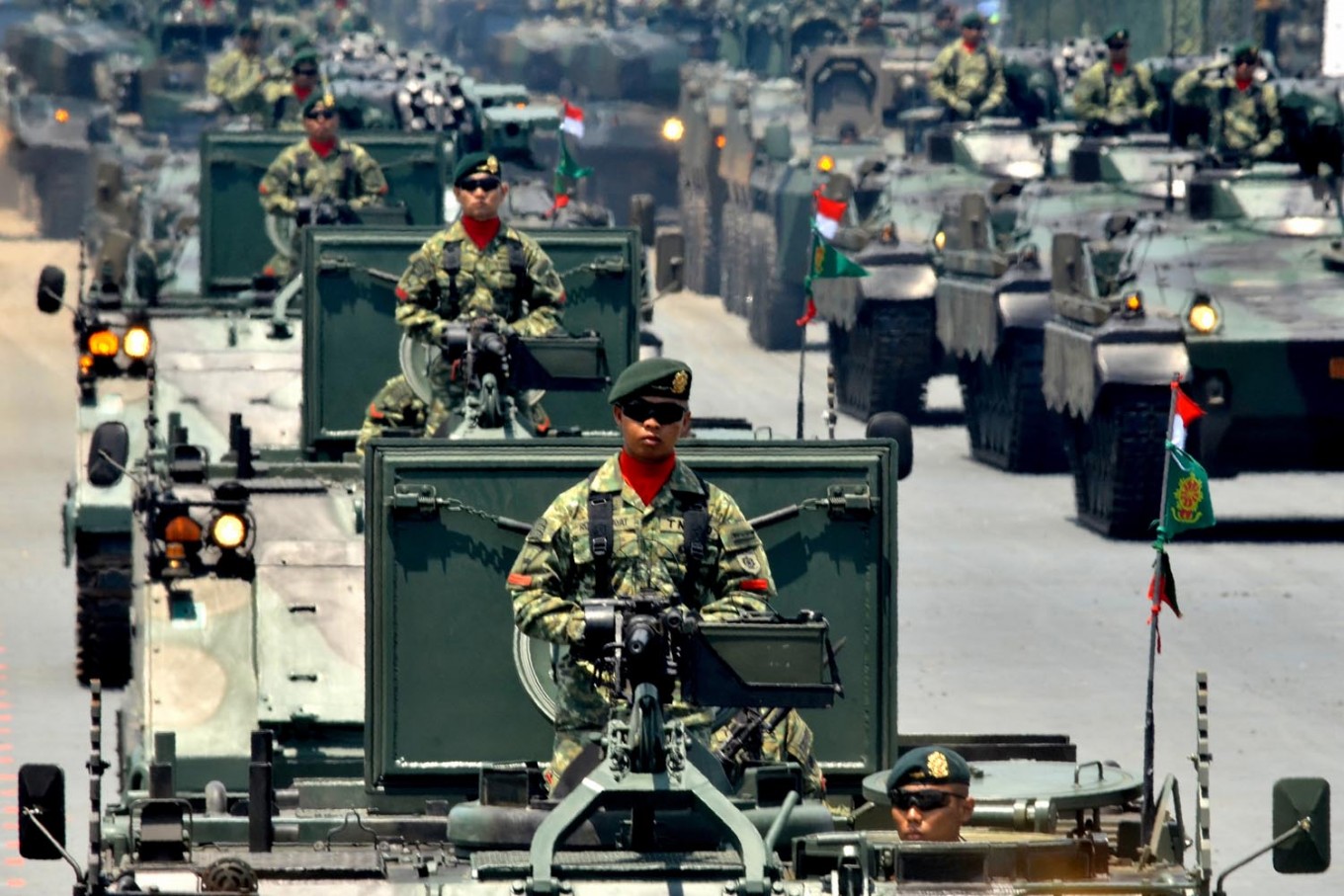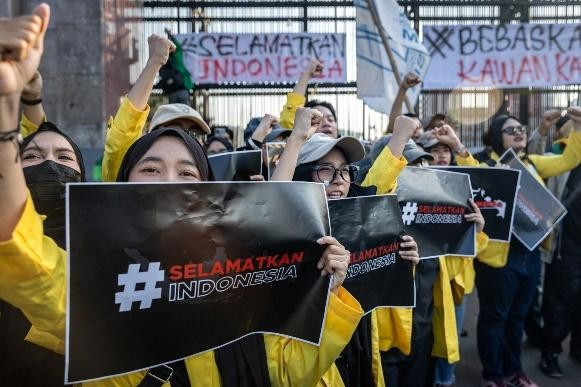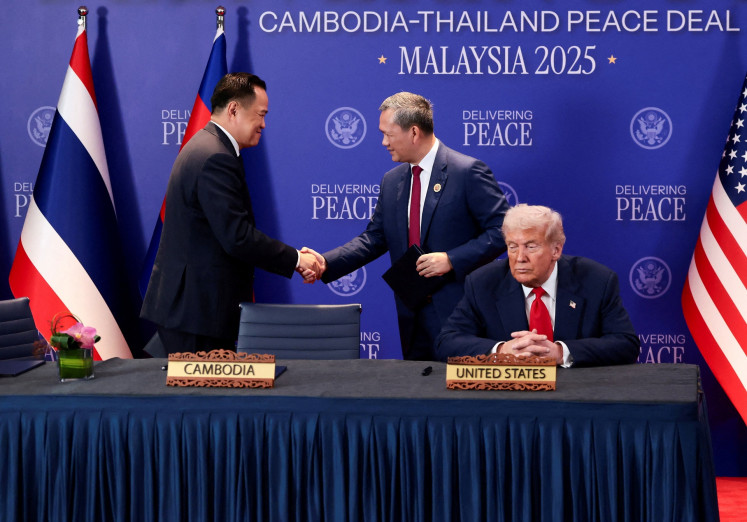Popular Reads
Top Results
Can't find what you're looking for?
View all search resultsPopular Reads
Top Results
Can't find what you're looking for?
View all search resultsMilitary personnel problems need more than quick fixes
There were over 12,000 military personnel assigned to non-military posts by 1998. But when only a third stayed outside the TNI after the reformasi, thousands had to “return” and compete for increasingly scant structural posts.
Change text size
Gift Premium Articles
to Anyone
I
ndonesian Military (TNI) commander Air Chief Marshal Hadi Tjahjanto recently announced major personnel policy changes. Sixty high-ranking officer positions will be created as new command posts or units will be established and some existing ones “up-ranked”. This means that some positions that normally require a colonel-rank officer will now be held by a one-star general, and some that used to require a one-star will now require a two-star, and so on.
The TNI might also send more officers to key ministries. The retirement age for non-commissioned officers (NCOs) and enlistees will also be extended to 58 years old.
These policies, according to the TNI leadership, target a fundamental problem: the growing number of “non-job” officers. But they are quick fixes that do not address the deeper problems within the TNI’s personnel management.
“Non-job” officers are an “output” of a flawed personnel management system. They specifically indicate the presence of promotional logjams: officers not being promoted to the right positions at the right time.
Officers might have stayed in some posts too long and prevent younger officers from coming in, or there are too many equally qualified officers for the same position.
Left unaddressed, these logjams pile up and distort the ideal personnel structure. The recent surplus of NCOs and enlistees—thousands by some estimates—has distorted the ideal ratio of 3:2:1 for combat, combat support and administrative support (or 3:1 for combat and support). The ratio is now 1:2.4 for combat and support.
Extending the retirement age of enlistees and NCOs will prolong their stay in the TNI when the organization already has too many of them. They also exacerbate the officer-level logjams. The logjams particularly affect younger Army officers (lieutenant colonels and colonels who graduated from the academy between the late 1980s and early 1990s).
In 2010, hundreds of Army colonels were on promotional “hold” because there were no commensurable billet openings. More than 60 were on hold for three years, over 100 for two years, and over 300 for one year. The Army had a “surplus” of roughly 30 general-rank officers and almost 330 colonels on average per year from 2011 to 2017.
This problematic output comes out of a flawed “processing” system— personnel management — and “input”— where officers come from.
The academy graduates, while only providing less than a quarter of all officers, provide a large pool of officers designated to hold a much smaller number of key posts. The expansion of academy graduates during the New Order made sense then as officers could be placed at various non-military posts.
There were over 12,000 military personnel assigned to non-military posts by 1998. But when only a third stayed outside the TNI after the reformasi, thousands had to “return” and compete for increasingly scant structural posts.
The large number of Army Staff and Command College (Seskoad) graduates is also problematic. If Seskoad does not reduce its graduates to around 150 soon, there could be a surplus of up to 600 officers by 2027.
Large academy cohorts have had to bear the brunt of the logjams in recent years, especially when the officer retirement age was extended to 58 in 2004, prolonging the stay of older academy cohorts.
The absence of an “up-or-out” policy—giving officers a limited length of service to get promoted—exacerbates the problem. Most academy graduates are all but guaranteed to reach colonel or one-star rank regardless of time.
Meanwhile, the metrics used to evaluate eligibility for promotion are also problematic. While career checkmarks are difficult to measure, it is puzzling that foreign and domestic operations are scored lower than military education, for example.
Additionally, the forms and data used to assess the track record are incomplete or inaccurate. The individual “assessment list” form that is key in assessing personality, skill, physical health, even personal and professional potential, is often filled subjectively and haphazardly by superior officers at the last minute.
Furthermore, senior officer appointments continue to be haphazard or political, rather than based on professional track-record. Informal institution such as patronage further hinders objective considerations.
While informal institutions could provide social capital and private goods that the TNI cannot provide (e.g. supplementary income), they undermine professional personnel management. Sometimes, patronage opens “back-channels” that influence promotional and ranking board deliberations. The lack of internal transparency further undermines morale and professional development.
For example, an outgoing officer often recommends a cohort mate to fill the vacancy rather than promoting younger officers. Some academy classes could thus dominate key positions at the expense of younger, and often larger, cohorts.
Finally, the constant tinkering of organizational structures since the 1950s causes inconsistent personnel management policies. The tinkering (dubbed “organizational validation”), recalibrates key positions or personnel requirement without fundamental overhaul.
Between 1954 and 2016, there were at least 23 structural changes to the military organization. This roughly translates to new changes every three years. Consequently, the TNI never had the chance to formulate and implement a long-term personnel management system.
The proposed policies do not confront these deeper personnel management challenges. Instead, they are just quick fixes to relieve some of the personnel logjam pressures but leave the underlying problem intact.
***
The writer is a senior researcher at the Centre for Strategic and International Studies (CSIS), Jakarta, Indonesia.










